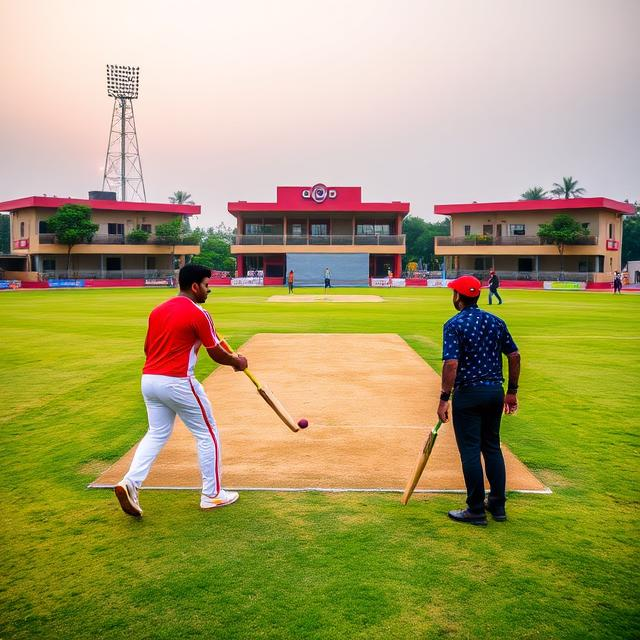Pakistan Cricket and the Pakistan Army: A Complex Relationship

Pakistan Cricket and the Pakistan Army: A Complex Relationship
Cricket, a beloved national pastime in Pakistan, often intertwines with the country’s military history and political landscape. The Pakistan Army, a powerful institution deeply ingrained in the nation’s identity, has had a complex and at times controversial relationship with the sport. This article explores the historical, social, and political factors that have shaped this unique connection, examining its impact on Pakistan cricket’s successes and challenges.
A Legacy of Support and Sponsorship
The Pakistan Army has, at various points in history, provided significant support to Pakistan cricket. From funding to infrastructure development, the military has played a role, particularly during times of national pride or during critical moments in the sport’s history. The army’s presence in the cricketing world extends beyond mere financial backing, often shaping the very narratives surrounding victories and defeats. Think of the iconic images of military officials attending major matches, or the presence of army personnel during training camps. These actions, while seemingly mundane, underscore a broader dynamic.
Historical Context: From Independence to Modern Times
Pakistan’s journey as a cricketing nation, intricately tied to the nation’s overall development, has been shaped by the Pakistan Army’s influence. Tracing the historical threads reveals a complex pattern. During the formative years of Pakistan, the army played a crucial role in national development, and sports like cricket served as a platform for national unity. The military’s investment in sports infrastructure and training facilities has undoubtedly contributed to the growth of the sport.
The army’s involvement extended beyond financial backing. Military officers, in some instances, were actively involved in the administration and governance of cricket. This direct engagement helped to consolidate the idea of cricket as a national institution.
The Modern Landscape: Navigating a Changing Dynamic
In contemporary Pakistan, the relationship between the two institutions is more nuanced. While the Pakistan Army continues to play a role in the nation’s sporting landscape, its involvement takes on different forms. This evolution is linked to Pakistan’s broader political landscape. The contemporary situation involves a subtle shift from overt sponsorship to more veiled forms of support. This evolution in approach reflects Pakistan’s political complexities and social realities.
The Role of Cricket in National Identity
Cricket occupies a unique space in Pakistani society, transcending mere sport. Victories and defeats resonate profoundly, often shaping national sentiment and uniting the population in shared emotions. The army’s association with the sport amplifies this emotional impact. The army’s involvement often becomes part of the broader narrative surrounding national identity, with triumphs on the cricket field sometimes seen as symbolizing national strength or resilience.
Challenges and Controversies: Navigating the Gray Areas
Despite the strong support, the relationship has its complexities. Criticism arises when the army’s role seems to overshadow the efforts of private individuals and sponsors. Concerns over the potential for undue influence and the perceived prioritization of military interests over genuine sporting endeavors are sometimes raised. These concerns, while often voiced in the media, are not always easily quantifiable.
The Impact on Performance and Politics
Analyzing the influence on performance is a challenging exercise, requiring a critical examination of factors beyond mere financial backing. The perceived impact of the army’s involvement on player morale and motivation is something that requires further investigation. Similarly, the political implications of this intertwining, particularly in times of crisis or heightened political tensions, deserve meticulous scrutiny. The potential for political manipulation within the sport, or the use of cricket as a platform for political messaging, demands a thorough examination of the various motivations involved.
Beyond the Pitch: Exploring the Social Implications
The relationship extends beyond the pitch, subtly shaping social norms and expectations within Pakistan. The influence on the perception of success, the role of national pride, and the public understanding of the Pakistan Army all intertwine in intricate ways. Understanding these social implications is vital to a comprehensive analysis of the relationship between cricket and the Pakistan Army.
A Future Perspective: The Evolving Landscape
The relationship between Pakistan cricket and the Pakistan Army is likely to continue evolving. It’s a complex dynamic, interwoven with history, politics, and the ever-shifting social landscape of Pakistan. Understanding this evolving relationship necessitates a multi-faceted approach, acknowledging both the historical context and the present-day realities.
Conclusion
The connection between Pakistan cricket and the Pakistan Army is a multifaceted and complex issue. It reflects the intertwined nature of sport, politics, and national identity in Pakistan. While the army’s support has undoubtedly played a role in the development and prominence of cricket in Pakistan, the relationship is far from straightforward. Exploring this complex connection requires a nuanced approach, acknowledging both the positive contributions and the potential for challenges. The relationship continues to unfold, demanding ongoing scrutiny and understanding of its evolution.
Further Research
Further research into the specifics of funding, military involvement in administration, and the impact on player performance could provide a deeper understanding of the intricacies of this relationship. Examining case studies from different periods and exploring diverse perspectives would further enrich this exploration. Investigating the subtle ways this relationship shapes social perceptions and national narratives in Pakistan would be a valuable addition to the study.